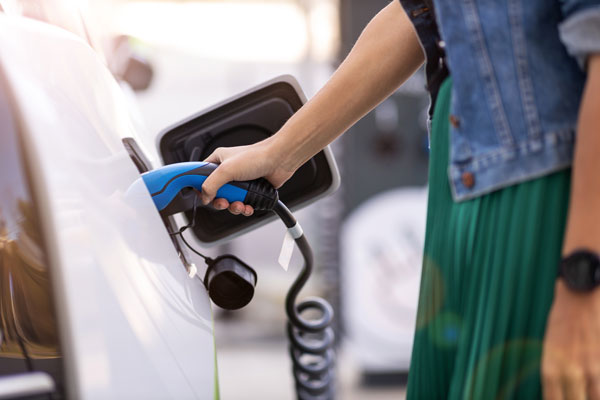Tips for taking your electric car on the road this summer
August 7, 2020

It is becoming easier to take your electric car on a road trip as new models come onto the market, driving ranges expand and electric vehicle technology continues to improve.
What kind of electric car is best for road trips?
Plug-in hybrid electric vehicles run on both electricity and gas and have a longer range than fully electric cars. Plug-in hybrids have a range of 20-80 km when fully charged and about 500 km of range when using gas. Fully electric vehicles run only on electricity and most have a range of 200-250 km, while some can drive up to 400 km on a single charge.
If you make sure to plan for keeping your battery charged, even your fully electric car can go on a long road trip.
Go to areas with good charging networks
Go to cities because urban areas have more charging stations. More are being added and there are many of them in cities from coast to coast.
Know where to find charging stations
A map of charging stations across North America is available at plugshare.com. Plan your route so that a charging station is always nearby.
Have a back-up plan
Make sure to plan for the unexpected, such as delays due to weather or traffic, and have a backup plan in place in case you do not make it to the charging station you had in mind.
Check when your chosen charging stations are less busy
Stay away during popular charging times to avoid waiting in line.
Plan for a few charging stops
Driving long distances in an electric vehicle will add to your travel time because of the time it takes to charge your battery at each stop. Turn this into a positive by getting the know the area you are in and finding activities to do while your car charges.
Charge overnight
If you do not make it to a charging station or want to save time the next day, plug your car in overnight and you should get a full charge by morning.
Charge your battery faster
Electric car batteries charge the fastest when they are between 20% and 80% full.
Do not let your battery get too low
Pushing your luck with the battery is not a good idea in case it runs out before you expect it to. If you are driving a fully electric car and your battery dies, recharging it is not as easy as walking to the nearest gas station.
Practice good charging etiquette
Make charging easier for other drivers.
- Do not unplug someone else’s electric car unless it is charged to 100% or they have left a note on their dash or on PlugShare saying that it is OK to do so.
- Only use designated parking stalls for charging or waiting to charge.
- Do not go too far in case you need to move your car.
- Take 30-40 minutes to charge only to the level that you need.
- If charging is free and the charge port of the car next to you is open, plug it in when you are done charging.
- Put the charging cord away neatly.
Expect variations in range
Temperature, weather, and altitude will affect your range, so keep this in mind when planning charging stops and make sure to have a buffer by not letting your battery empty completely.
Efficient driving
Changing a few things about the way you drive can give you more driving time per charge.
- Air conditioning, heat and accessories can drain your battery.
- Speed drains your battery and the faster you drive, the more aerodynamic resistance there will be.
- Mountains and hills drain your battery quicker than flat roads.
- Hard braking is not energy efficient.
Get your car ready
Make sure you do basic maintenance on your car before going on a road trip or take your electric car to the shop so a mechanic can do it for you. Things to check include tires, the battery, fluids, lights, brakes, windshield wipers and lights.
Other News

Real Insurance Stories from Real People - Langley, B.C., customer Brenda S. explains her claims experience for home insurance with Western Coast
Western Coast Insurance Services Testimonial We’re here to help you through the clai…

You Can Shop Around for Optional Car Insurance in B.C.
Yes, you can buy optional car insurance from private insurers in British Columbia. For basic…
Western Coast Insurance Services Ltd. is a wholly owned division of Western Financial Group Ltd. Insurance products are underwritten by certain licensed insurance companies and are only available throughout British Columbia, Canada.
2025 Western Coast Insurance Services Ltd. All rights reserved.


